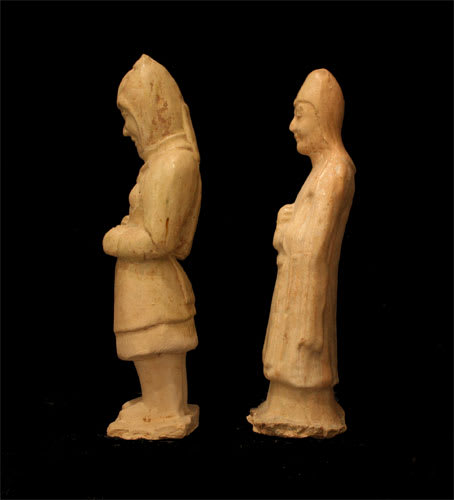Sui Pair of a Palace Guardian and an Official, 581 CE - 618 CE
Glazed Terracotta
3.25 x 11
H.046c
Further images
Pottery figurines of the Sui Dynasty are characterized by the use of 'straw' colored glaze and white pottery. This set exemplifies period production as well as subject matter. Depicting a...
Pottery figurines of the Sui Dynasty are characterized by the use of "straw" colored glaze and white pottery. This set exemplifies period production as well as subject matter. Depicting a standing soldier and court official, these figurines provide a glimpse of the complex world of Chinese burial art. Both figurines bear characteristics that appear to blend attributes of standard subjects. The soldier's suspecting eyes, sly grin and gross features liken him to an evil detecting tomb guardian yet his attire of a knee length tunic protruded by a comb patterned underskirt and tucked trousers or high boots gives him the appearance of a lower ranking foot soldier. A tight cap which rises in the center fits tightly around his head framing his incaptivating expression. Likewise, the accompanying figurine blends characteristics of a court functionnaire or a religious teacher. He appears contemplative, if not meditative, as he humbly holds an emblem of office. His mitre-like cap resembles those of Tibetan Lama priests and his long tunic covered by an unadorned cape and worn over a longer under garment reminds one of monastic attire. The subject of tomb figures is closely linked with Chinese religion and philosophy. The tomb signified a gate to the afterlife or a meeting place of the two worlds. Pottery figurines replaced the Eastern Zhou tradition of interring live persons, animals and actual objects.





